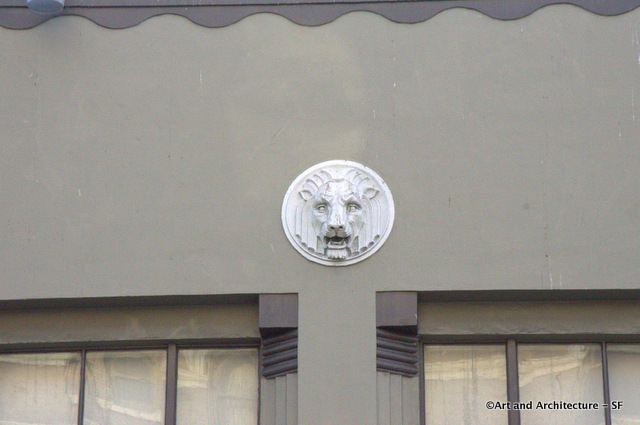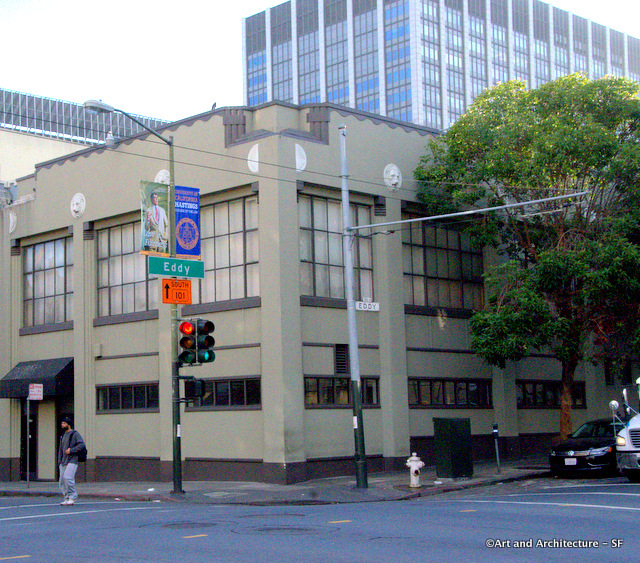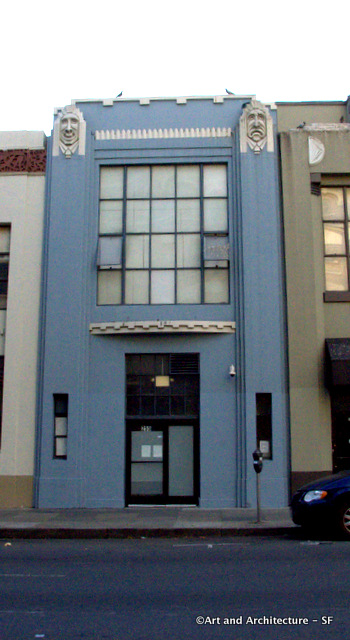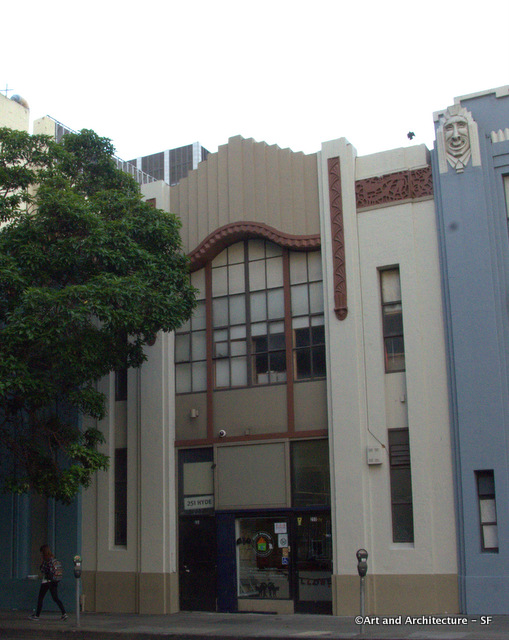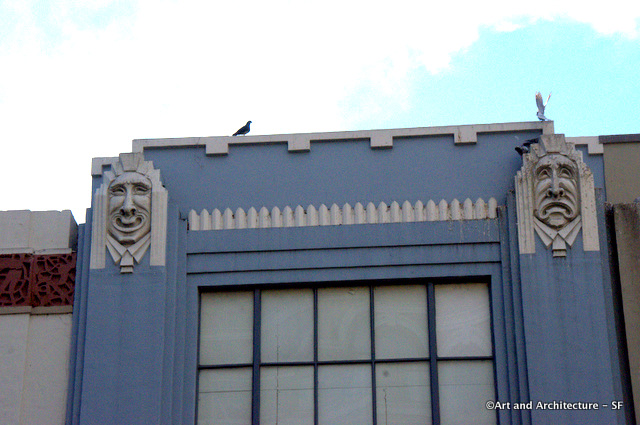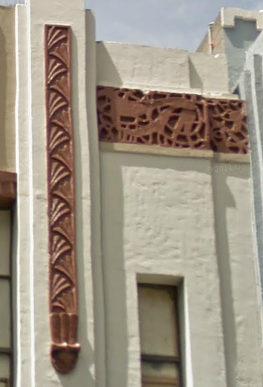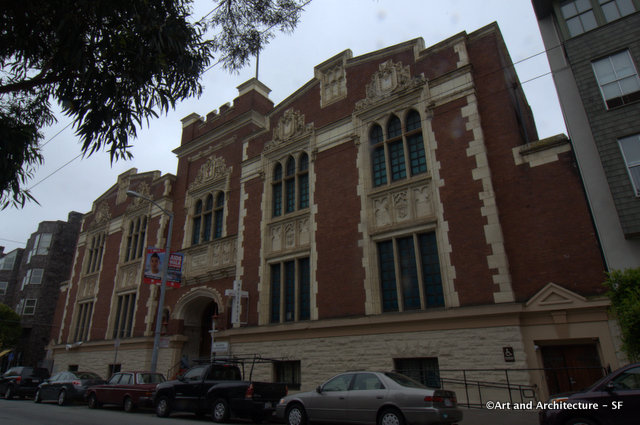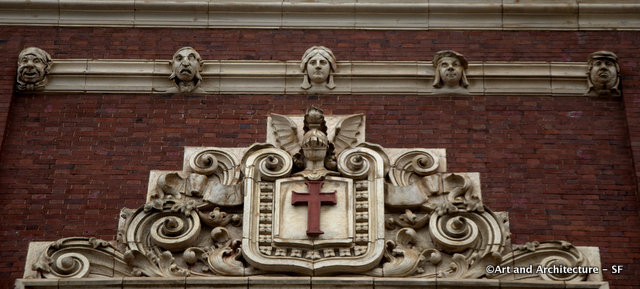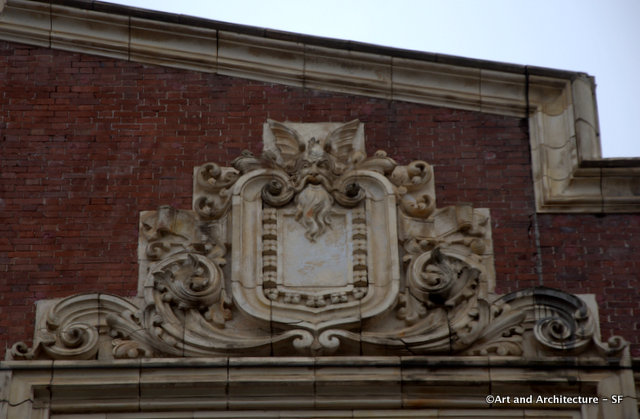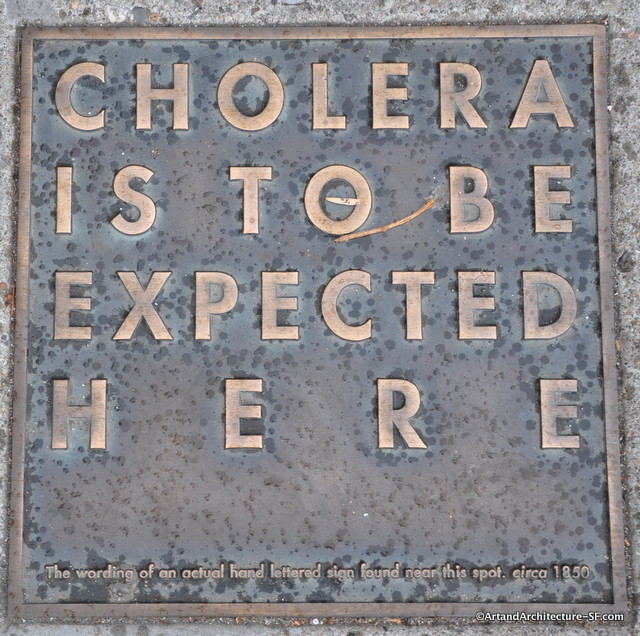245-259 Hyde Street
The Tenderloin
I have driven by this area with these stunning Art Deco/Art Moderne buildings all in a row, and never pursued the history. An evening of beers at the Brown Jug with Mark Ellinger and my eyes were opened.
Originally theaters purchased the films they showed their patrons. Then Harry, Herbert and Earle C. Miles, San Francisco brothers, realized there was a business in buying films in bulk and renting them to movie houses. Their original distribution centers were on Market Street/Golden Gate Avenue.
Inside these four buildings were film vaults with thick concrete walls and big iron doors with elaborate sprinkler and ventilation systems. The reason is, the original films were highly flammable nitrate-based. Movie theaters frequently caught fire because of these flammable films, even more reason for a delivery system. In the 1950’s a less flammable form of acetate based film, actually called safety film, came into existence.
The first building of the series is the MGM Film Vault, distinguished by the MGM Lion.
These four buildings are built on two lots. The MGM and the Comedy and Tragedy buildings were on one lot (255-259) and the brown building and the blue building hidden behind the tree were on a second (245-251). These now all sit on one lot.
According to Mark’s article at Found in SF the original owners of the corner building were the Bell Brothers in 1930 and then Frank and Ida Onorato in 1947.
Until the end of the 1980s, businesses along this stretch of Hyde Street and around the corner on Golden Gate Avenue included Wally Heider Studios (now Hyde Street Studios), Monaco Labs and Leo Diner Films—a recording studio and motion picture labs/post-production facilities that, with the advent of acetate-based Kodacolor and black-and-white reversal motion picture film in the early 1950s, had taken over film exchange buildings.
The architects were O’Brien Brothers and W.D. Peugh (1930). These gentlemen worked together on several buildings in San Francisco including the Art Deco Title Insurance Company Building on Montgomery Street, where you can read about their long history with San Francisco.
These buildings housed 20th Century Fox, Loews, and United Artists film exchanges as well.
*

